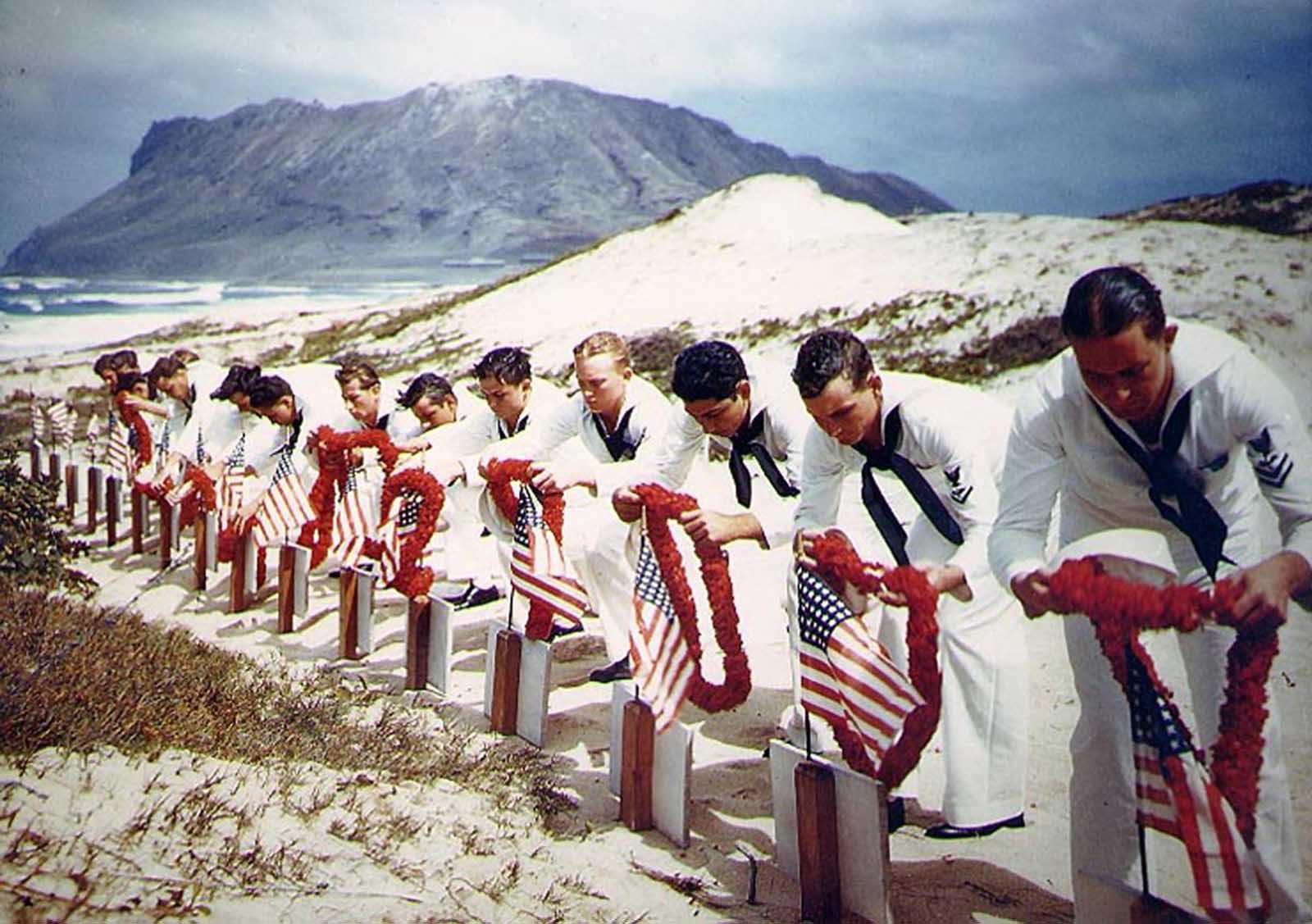
At 7:55 a.m. Hawaii time, a Japanese dive bomber bearing the red symbol of the Rising Sun of Japan on its wings appeared out of the clouds above the island of Oahu. A swarm of 360 Japanese warplanes followed, descending on the U.S. naval base at Pearl Harbor in a ferocious assault. The surprise attack struck a critical blow against the U.S. Pacific fleet and drew the United States irrevocably into World War II.

For weeks, a war with Japan had appeared likely since negotiations had deteriorated over the subject of Japan’s military forays into China and elsewhere in the Pacific during World War II. President Roosevelt and his advisors knew that an attack on the U.S. fleet at the Philippines was possible, but few suspected the naval base at Pearl Harbor would be a target. Unfortunately, nothing had been done to increase security at the important naval base at Pearl Harbor.

Japanese forces trained for about a year to prepare for the attack. The Japanese attack force, which included six aircraft carriers and 420 planes, sailed from Hitokappu Bay in the Kurile Islands on a 3,500-mile voyage to a staging are 230 miles off the Hawaiian island of Oahu.


At 7:02 a.m., two radar operators spotted large groups of aircraft in flight toward the island from the north, but, with a flight of B-17s expected from the United States at the time, they were told to sound no alarm. Thus, the Japanese air assault came as a devastating surprise to the naval base.




Much of the Pacific fleet was rendered useless: Five of eight battleships, three destroyers, and seven other ships were sunk or severely damaged, and more than 200 aircraft were destroyed.


Japan’s losses were some 30 planes, five midget submarines, and fewer than 100 men. Fortunately for the United States, all three Pacific fleet carriers were out at sea on training maneuvers. These giant aircraft carriers would have their revenge against Japan six months later at the Battle of Midway, reversing the tide against the previously invincible Japanese navy in a spectacular victory.

Late that night, Roosevelt updated his cabinet and Congressional members on the situation: “this is probably the most serious crisis any Cabinet has confronted since the Civil War.” One cabinet member later noted that the president, a former Navy man, was visibly distraught while recounting what he had been told of the strafing of sailors and the destruction of most of the Pacific fleet.


President Franklin D. Roosevelt addressed a joint session of the U.S. Congress on December 8, the day after the crushing attack on Pearl Harbor.
“Yesterday, December 7, 1941—a date which will live in infamy—the United States of America was suddenly and deliberately attacked by naval and air forces of the Empire of Japan.”
He went on to say, “No matter how long it may take us to overcome this premeditated invasion, the American people in their righteous might will win through to absolute victory. I believe I interpret the will of the Congress and of the people when I assert that we will not only defend ourselves to the uttermost, but will make very certain that this form of treachery shall never endanger us again.”

After the Pearl Harbor attack, and for the first time during years of discussion and debate, the American people were united in their determination to go to war.
The Japanese had wanted to goad the United States into an agreement to lift the economic sanctions against them; instead, they had pushed their adversary into a global conflict that ultimately resulted in Japan’s first occupation by a foreign power.
On December 8, Congress approved Roosevelt's declaration of war on Japan. Three days later, Japan’s allies Germany and Italy declared war against the United States.
For the second time, Congress reciprocated, declaring war on the European powers. More than two years after the start of World War II, the United States had entered the conflict. The American contribution to the successful Allied war effort spanned four long years and cost more than 400,000 American lives.

In 115 minutes of mayhem and destruction, 360 Japanese warplanes sank two navy battleships - USS Arizona (BB 39) and USS Oklahoma. Many other ships were sunk, but later recovered and repaired. They destroyed 160 aircraft and damaged 150. They killed 2,403 servicemen and civilians and injured 1,178 others. Dry docks and airfields were likewise destroyed. Most importantly, 2,403 servicemen and civilians died while 1,178 others were injured, many while valiantly attempting to repulse the attack.
The Japanese had failed to cripple the Pacific Fleet. By the 1940s, battleships were no longer the most important naval vessel: Aircraft carriers were, and as it happened, all of the Pacific Fleet’s carriers were away from the base on December 7. As it was, the elimination of the battleships left the U.S. Navy with no choice but to rely on its aircraft carriers and submarines—the very weapons with which the U.S. Navy halted and eventually reversed the Japanese advance.
Moreover, the Pearl Harbor assault had left the base’s most vital onshore facilities—oil storage depots, repair shops, shipyards and submarine docks—intact. As a result, the U.S. Navy was able to rebound relatively quickly from the attack.





Half of those who died at Pearl Harbor were on the USS Arizona. Today the sunken battleship serves as a memorial to all Americans who died in the attack.





